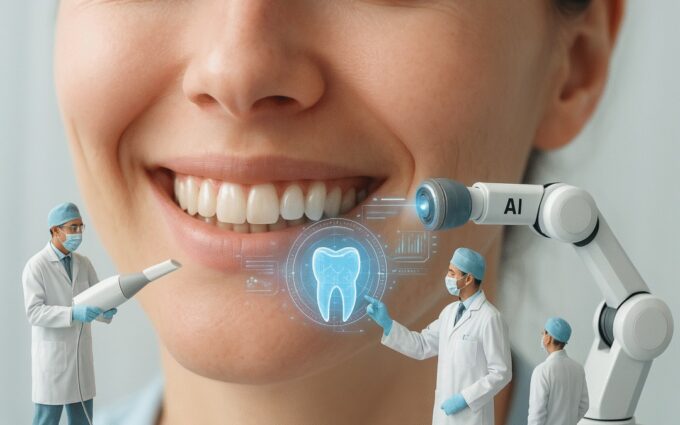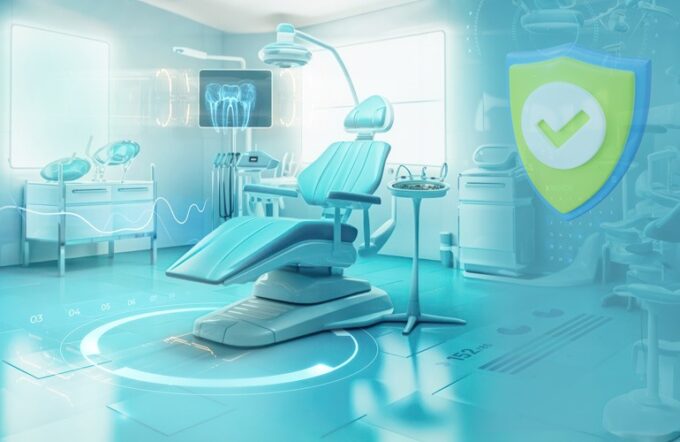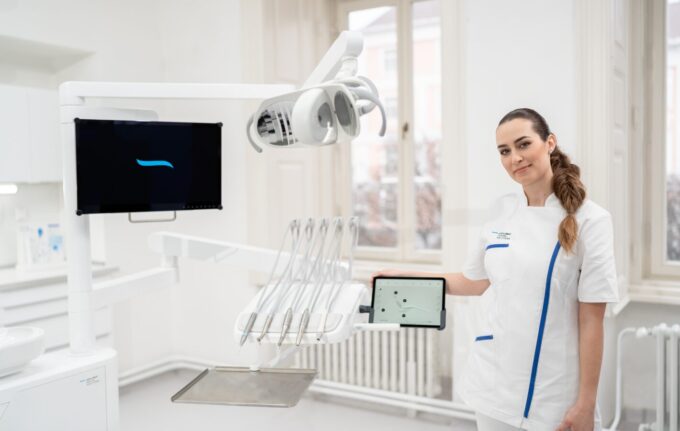The hum of suction lines, the steady rhythm of instruments, and the flicker of a patient chart on the monitor, in modern dentistry, data quietly orchestrates much of what happens behind the scenes.
From digital imaging to patient history analytics, the shift toward data-driven practice is transforming how dentists plan, communicate, and personalize care.
It’s not just about technology replacing intuition; it’s about amplifying clinical insight with patterns that only data can reveal.
The New Era of Data-Driven Dentistry

Source: speareducation.com
Personalized care has become the defining standard of modern healthcare, and dentistry is no exception.
Every patient brings a unique set of genetics, habits, and anxieties. The days of one-size-fits-all treatment plans are fading fast, replaced by customized protocols informed by digital data.
Electronic health records, AI imaging, and predictive analytics now give clinicians an objective overview of each case.
Dentists can anticipate complications, track progress, and even tailor follow-up schedules. The result is smoother workflow, stronger patient trust, and measurable improvement in treatment outcomes.
Key points:
- Data improves diagnostic accuracy and treatment predictability.
- Personalized care boosts patient compliance and satisfaction.
- Digital tools help teams communicate with precision and empathy.
Turning Data into Personalized Treatment Paths
When data flows seamlessly across diagnostic and clinical systems, it reshapes decision-making.
A digital X-ray doesn’t just show a cavity; it connects to a record of past fillings, hygiene reports, and bite analysis. Suddenly, the dentist isn’t reacting, they’re predicting.
Before vs After Data Integration
| Stage of Care | Traditional Workflow | Data-Enhanced Workflow |
| Diagnosis | Visual inspection and charts | AI-supported imaging and data correlation |
| Treatment Planning | Manual estimate of needs | Predictive models with patient-specific variables |
| Follow-up | Routine check intervals | Personalized scheduling based on healing data |
Data enables smarter prioritization. Patients at risk of gum disease, for instance, can be automatically flagged for earlier interventions. It’s this proactive nature that turns care into prevention, not just repair.
The Role of AI in Building Patient Trust

Source: drjaydevdental.com
Dentists often walk a delicate line between precision and reassurance. Patients want to understand their options without drowning in terminology.
Here’s where artificial intelligence steps in – not as a replacement, but as a translator of data.
Today’s AI platforms can summarize X-ray results, visualize oral health changes, and suggest personalized treatment sequences.
Tools like Trust AI exemplify how technology enhances, rather than replaces, the human element in dentistry.
They help practitioners interpret data responsibly and present it to patients in a clear, confidence-building way.
The real impact isn’t just faster analysis; it’s the emotional reassurance that comes from clarity. When patients see data-backed explanations instead of vague reassurances, they feel respected, not rushed.
Data as a Team Communication Tool
In a busy clinic, coordination is everything. Hygienists, dental assistants, and front-desk staff all depend on accurate data flow. A shared dashboard, for example, eliminates the need for verbal updates or sticky-note reminders.
How Data Enhances Teamwork:
- Centralized scheduling ensures no duplication or missed steps.
- Shared analytics dashboards align the team’s goals.
- Automated alerts help track patient progress between visits.
One clinician described it best: “We went from talking about what went wrong last week to planning what we’ll improve next week.” With that shift, data becomes more than a record, it becomes culture.
A study in the Journal of Dental Research found that clinics using predictive analytics reduced treatment delays by 28% and increased patient retention by 22%. The takeaway is simple: when dentists know their data, they can know their patients better.
Data Security and Ethical Responsibility

Source: vipre.com
Collecting patient information is one thing; protecting it is another. As practices digitize, security becomes a clinical duty. Patients entrust not just their health, but their identity, to dental teams.
Modern dental software employs encryption, multi-factor authentication, and GDPR-compliant storage. Yet the real safeguard comes from mindset.
Ethical data handling is part of clinical professionalism. Training staff to understand privacy laws and recognize phishing attempts is now as vital as learning to handle an impression tray.
Quick tips for safe data practices:
- Use encrypted storage for all patient images and charts.
- Regularly audit who accesses sensitive information.
- Update cybersecurity protocols every six months.
Predictive Analytics: The Future of Preventive Care
Imagine a system that alerts you before a patient’s implant fails or a cavity forms. Predictive analytics makes that possible. By analyzing variables like bone density, bite force, and hygiene habits, these systems can estimate risk levels and suggest early action.
The beauty lies in timing. Early warnings allow non-invasive solutions: remineralization treatments, orthodontic adjustments, or hygiene education before irreversible damage occurs. Predictive tools don’t just save money, they protect smiles before problems arise.
Humanizing the Numbers
Data alone can’t feel a patient’s anxiety before a root canal, or see the hesitation behind a smile. Personalization means connecting the dots between data and empathy.
For instance, when a system shows a patient’s history of missed appointments, it could signal fear, not forgetfulness.
Recognizing that helps dentists adjust their communication, tone, or even treatment pacing.
This is where modern practitioners stand out. They don’t just interpret X-rays; they interpret people. They let data whisper, not dictate.
Shortcase: How One Clinic Transformed Outcomes

Source: diplomat-dental.com
In a mid-sized urban clinic, integrating AI-based analytics led to striking improvements within six months. The team reported:
- 30% reduction in appointment no-shows due to automated reminders.
- 40% faster treatment approvals with visual data aids.
- 25% higher hygiene compliance through personalized care reminders.
Patients described the experience as “more like being guided, less like being told.” For the clinic, numbers became stories and those stories built loyalty.
The Balance of Technology and Intuition
Dentistry will always be an art guided by science. Data amplifies that balance. It helps clinicians see trends invisible to the naked eye, but it’s still up to human judgment to interpret them wisely. The goal isn’t to replace instinct but to refine it.
Each digital chart, algorithm, or dashboard is a reflection of the same core mission: to make care more human.
When data is handled thoughtfully, it becomes a bridge, connecting patient comfort, clinician confidence, and long-term trust.
Closing Thoughts
Personalized dentistry isn’t just the future; it’s the present quietly taking shape in every data-informed decision. The best clinicians today are not only skilled in restoration and diagnosis but fluent in the language of information. Data doesn’t diminish their expertise; it magnifies it.
By combining empathy, analysis, and responsibility, dental teams can deliver care that feels both advanced and personal, precise where it matters, and compassionate where it counts.



